The Hippocampus Brief by Nicholas Samaras
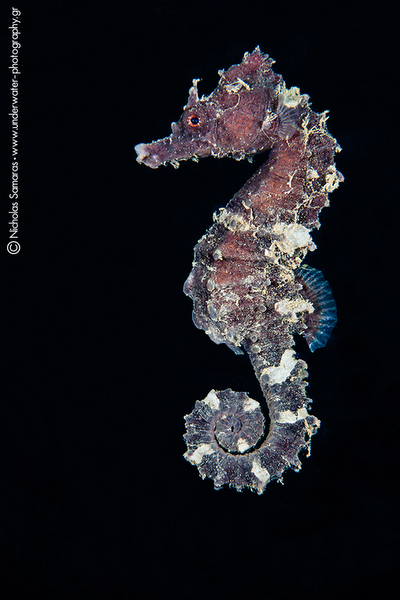
The Hippocampus Brief by Nicholas Samaras
Historically, Stratoni, a small gulf in Northern Aegean Sea, along with many other small and more significant coves that compose the beautiful coastline of the eastern Thessaloniki region was a place with abundant marine life and significant numbers of different fish species. It had a sandy sea bottom covered in seagrass, sponges, anemones and small gorgonians.
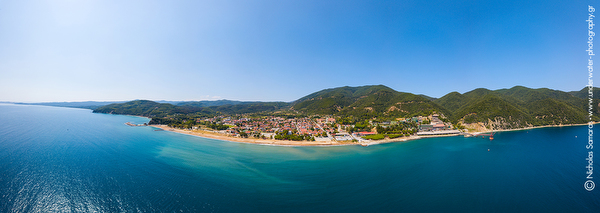
Stratoni was also home to a disused silver, lead and zinc mine.

Stratoni, when compared to other nearby gulfs and coasts, had a significant number of seahorses that inhabited the sea bottom. For the locals and fishermen, this was not something special. Seahorses were a common by-catch, and if they were still alive in the net, they were thrown back to the sea. If dead, they became dried souvenirs and decorations for local taverns.
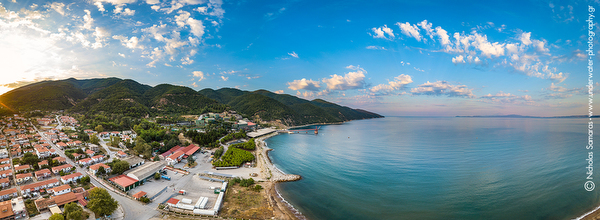
About three decades ago, a large number of trawlers destroyed the sea bottom with their fishing gear. They ripped up large areas of the marine flora, including the seagrass with its nests, eggs, and small fishes. Soon, there were no fishes left to fish, so the fishing boats moved on to other places.
While the area was struggling to survive this disaster, a tremendous flood in the area in 2010 washed vast amounts of soil and sediment into the sea and buried what was left of the sea flora.
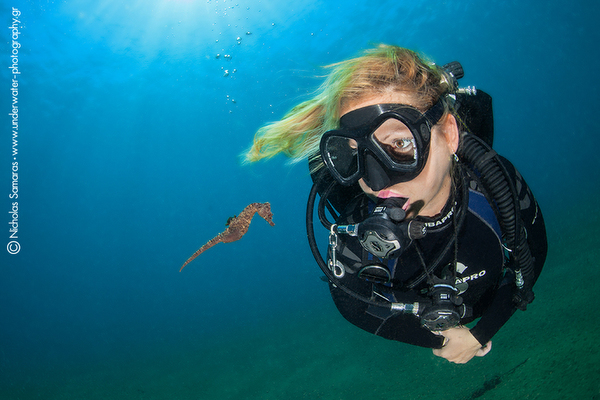
Before these sad events, this place was known among divers as “the seahorse kingdom” and as the “secret” was shared, so details about the exact points to enter the water and accurate depths to encounter the little critters became widely known. With this info from a friend, I had photographed seahorses before the flooding, and a set of seahorse portraits were included to my first underwater photograph exhibition back in 2008.
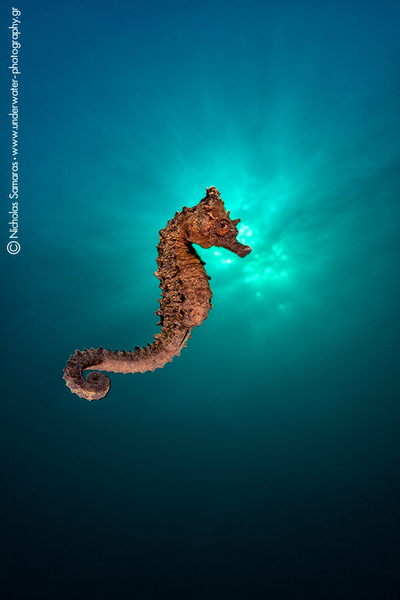
About a decade ago, the old mines reopened their mining galleries under new ownership. Besides, many articles and aerial photographs presented complete destruction of the area from forest to coast and severe sea pollution. This caused scuba divers to lose their interest in diving in Stratoni.

However, a team of marine biologists recently rediscovered the place and started to observe the environment. They were trying to figure not only the quality of the water but to also reach some conclusions regarding, firstly, how seahorses managed to survive after the overfishing and the environmental destruction of the area through the years, and secondly why they prefer this specific area as their habitat.
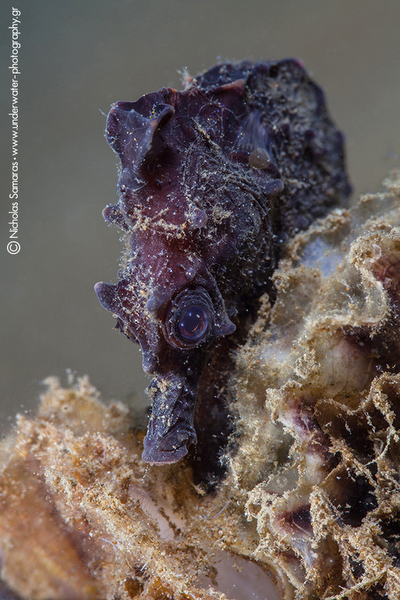
The scientists established a complex set of plastic grids with ropes and some fake sea flora as an artificial reef to record the reaction of the seahorses that immediately inhabited them. The biologists filmed some scenes and published their research about this unique Hippocampus colony. It is not only the only one in the Aegean Sea but also the only one thus far discovered in the Mediterranean Sea.
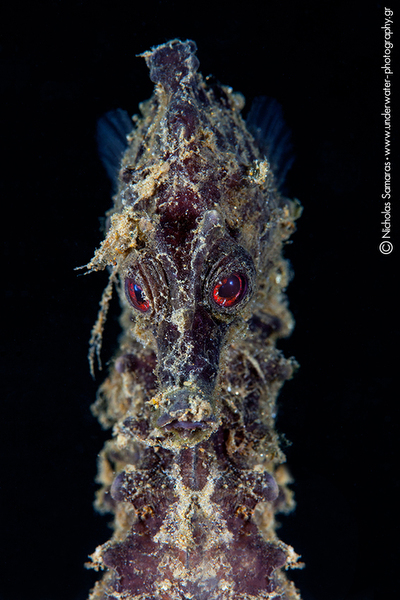
I was pleased to hear about the seahorses’ continued survival and was curious about the place I had dived so many years before, so I planed three days of diving at the end of August to photograph my favorite animal again.
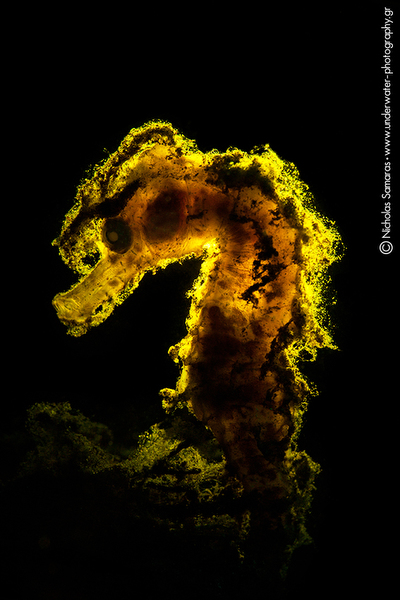
On my first day of diving, I was really disappointed with the visibility, but I was thrilled with my discoveries as I encountered more than ten seahorses of both the species living there, Hippocampus ramulosus (yellow) and Hippocampus hippocampus (brown).
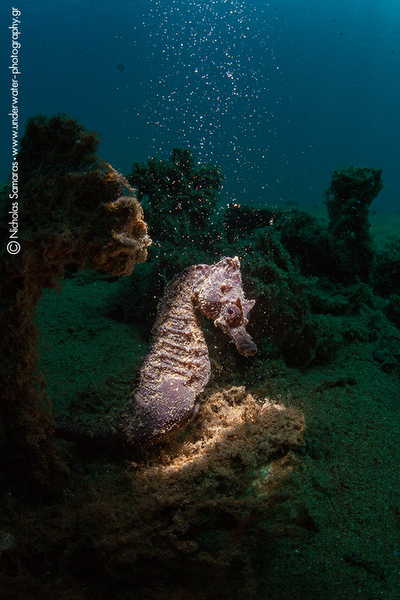
On diving days two and three, the water was crystal clear. Temperature and great visibility helped me to experiment with different techniques and play with macro and wide-angle lenses, to try snooting and to use colored torches to create special effects. As a diver and mostly as a photographer I was more than satisfied with the result. At some point I found the remains of the plastic, experimental reef which had been destroyed by a fishing boat and discarded on the sea bottom, looking more like garbage than a reef.
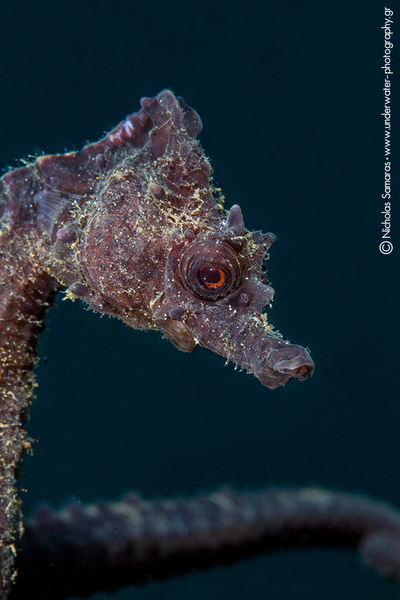
After nine hours underwater split over six dives, I had on my memory cards a complete portfolio of seahorses. Full of thoughts and images, I spent some time before my departure on the empty beach trying to figure out the situation. Τhis once crowded place has been abandoned by tourists, swimmers, and fishermen. The sea bed seems “empty” from a distance.
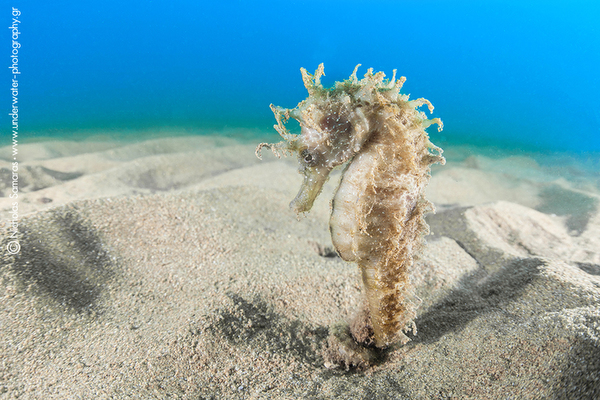
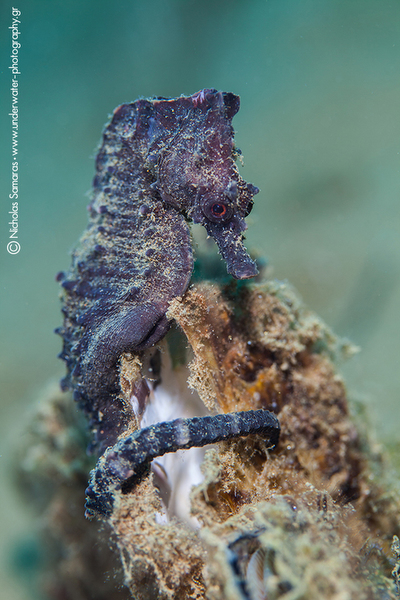
However, one fragile, shy and harmless critter refused to leave and managed to survive through the years and the destruction of its habitat. Maybe seahorses are more robust than we think. Perhaps the behavior we refer to as tolerance to our presence is actually something more like stubbornness. Maybe our absence from the coast helped this place to recover slowly and nature found the way to erase our mistakes and remove our traces.
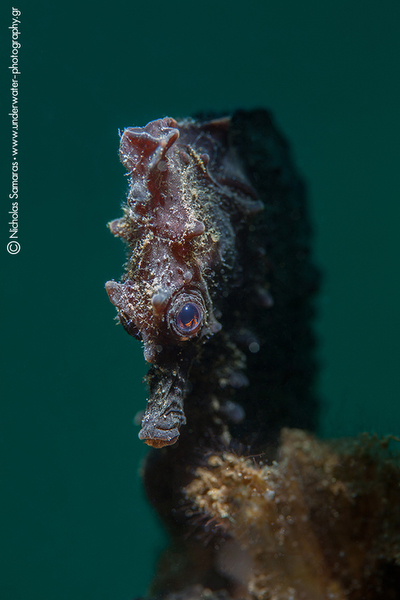
About the Author
Nicholas Samaras is an award-winning photographer and one of the most passionate and committed photographers worldwide. His love and dedication to the sea and its creatures in combination with his unique effort to bring out to the surface the beauty of the marine world, with his unique aesthetics, established him in a short time both in his native Greece and abroad.
To see more of his work, please visit his website